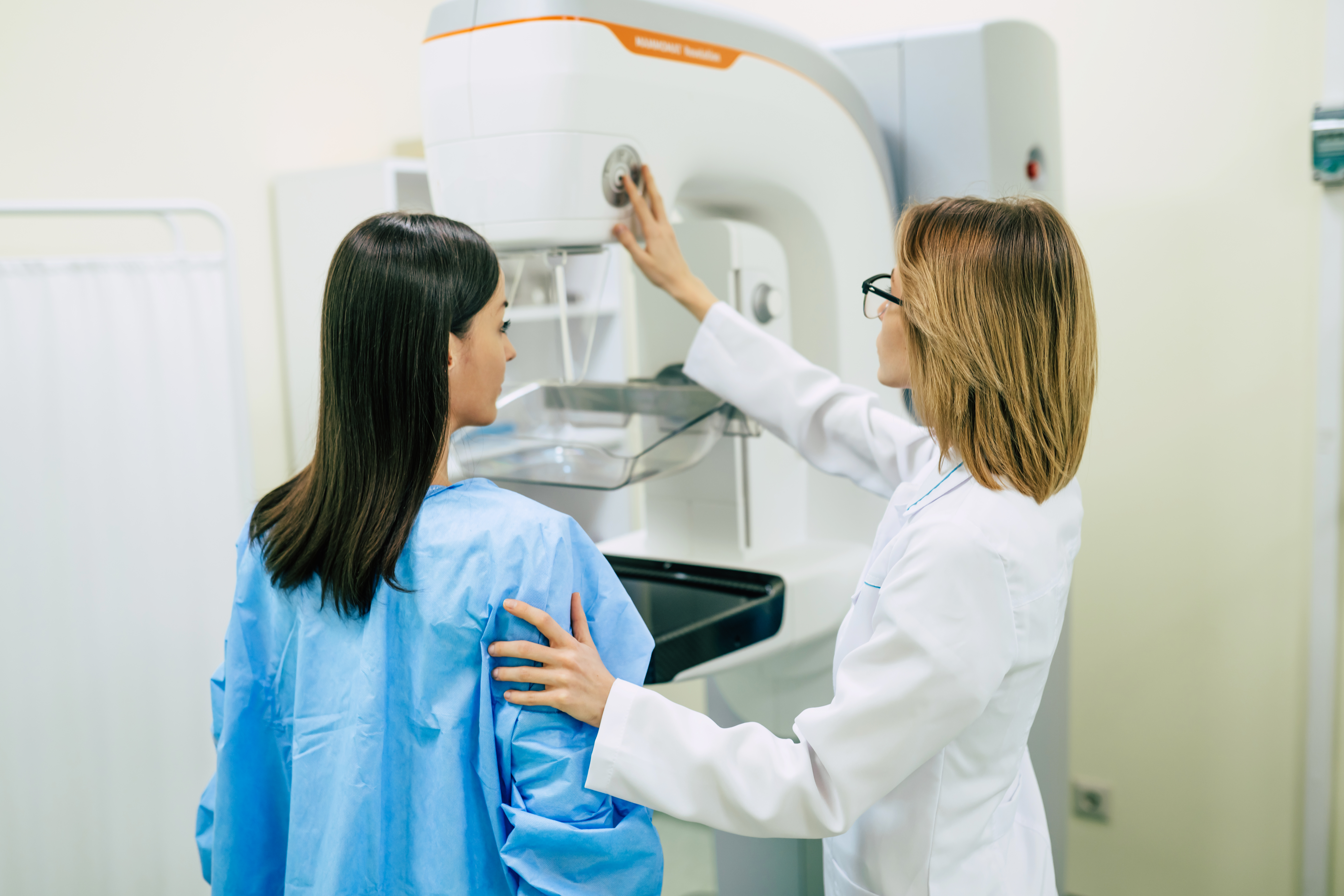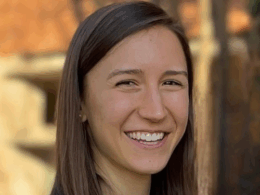What would you think if I told you that you could possibly reduce your risk for the type of cancer that kills roughly 40,000 American women every year by nearly 66%*, just by visiting your doctor for an annual physical and mammogram? You would think women would be banging down the doors of every radiology center across the country! But according to one Illinois-based hospital system which recorded the top 10 reasons why women avoid mammograms, the reasons women forgo the procedure range from “it hurts” to “I have small breasts” (perhaps because there’s a myth that women with large breasts are more likely to get breast cancer). But if you’re over 40 and you’ve been putting off getting your annual mammogram, it might be time to rethink your own reasons for delaying this form of breast cancer screening.
Breast cancer symptoms and statistics
Before we get into mammograms, let’s review the basics of breast cancer. As the second most common cancer for women after skin cancer (and the second most common cause of cancer death in women after lung cancer), breast cancer accounts for 30% of new female cancers every year, with over 300,000 women diagnosed annually. According to the American Cancer Society, there is a 1 in 8 chance that the average American woman will be diagnosed with breast cancer in her lifetime. Diagnosis typically occurs after the age of 50, although in recent years, the incidence of breast cancer in women under 50 has increased by about 1.4% each year. According to the American Cancer Society, this is “thought to be due to risk factors of having excess body weight, not having children, or having a first child after age 30.”
The most common symptom of breast cancer is a lump or mass that you didn’t notice before. If you’re already using the Creighton method of fertility awareness, you are hopefully performing the breast self examination (BSE) on day 7 of your cycle, or on day 6, as recommended by the Sympto Thermal Method. (And if you’re not using a fertility awareness method yet, check out our quiz here to find the right match for you.)
Other possible symptoms of breast cancer are swelling of all or part of the breast, skin dimpling (like an orange peel), breast or nipple pain, nipple retraction, nipple or breast skin that is red, dry, flaking, or thickened, nipple discharge (other than breast milk), and swollen lymph nodes under the arm or near the collarbone.
However, because breast cancer is usually easier to treat the earlier it’s caught, mammograms may help detect breast cancer before symptoms like lumps and other breast changes begin. In fact, it’s likely because of increased breast cancer awareness and screening, as well as better treatments, that rates of breast cancer deaths have decreased by 44% from 1989 to 2022.
Because breast cancer is usually easier to treat the earlier it’s caught, mammograms may help detect breast cancer before symptoms like lumps and other breast changes begin. In fact, it’s likely because of increased breast cancer awareness and screening, as well as better treatments, that rates of breast cancer deaths have decreased by 44% from 1989 to 2022.
How do I know if I should get screened?
Luckily for many women–that is, those who do not have immediate family members who’ve had breast cancer– mammograms are not typically needed until the age of 40. This was recently bumped down from age 45 by the United States Preventive Services Task Force (USPFTF), in the hopes that by starting regular mammograms at 40, 20% more lives can be saved from breast cancer deaths. This may especially be the case for black women, who have a similar incidence of breast cancer to white women, but who are at a higher risk for mortality from the disease. This change in guidelines by the USPFTF is also recommended by the American College of Radiology, American Society of Breast Surgeons, and the American College of Obstetrics and Gynecology. After age 40, screening is recommended either every year, or every other year, depending on what you and your doctor decide is best for you, up until age 75.
Are mammograms safe?
According to the American Cancer Society, mammograms are considered safe even though they expose the breasts to a small amount of radiation (since they’re performed with a type of x-ray machine). While the amount of radiation from a mammogram is about the same amount of radiation as someone would be exposed to over the course of 7 weeks from natural background radiation, pregnant women should let their doctor and mammogram technician know before being screened.
Women with a higher breast cancer risk should start mammograms sooner
You may be at an increased risk for breast cancer if:
- You’ve had cancer of the ovary, fallopian tubes, or peritoneum
- You’ve had breast cancer at age 45 or younger
- You’ve had breast cancer and have a close relative that had breast cancer at age 50 or younger, or a close relative with cancer of the ovary, fallopian tubes, or peritoneum
- You’ve had breast cancer and you have two or more close relatives that have ever had breast cancer
- You’ve had breast cancer and you have two or more close relatives with cancer of the pancreas or prostate
- You’ve had breast cancer and you are of Eastern or Central European Jewish ancestry
- You have a close relative with a BRCA1 or BRCA2 mutation
(For more information on how hormonal birth control, pregnancy, and abortion impact your breast cancer risk, see this article from Natural Womanhood. For more on interpreting your personal cancer risks, see this article from Natural Womanhood. And finally, for more information on why healthy menstrual cycles are crucial to healthy breast development and the prevention of cancer, see this article from Natural Womanhood.)
What about BRCA gene mutations?
Hearing the term “BRCA,” often called “the breast cancer gene,” might bring back memories of Angelina Jolie’s preventative double mastectomy in 2013. The actress made headlines for her decision to remove her breasts after finding out she had a mutation of this tumor suppressor gene. In a New York Times op-ed explaining her decision, Jolie described losing her mother, grandmother, and aunt to breast cancer (her mother had ovarian cancer, too). In reality, everyone has BRCA1 and BRCA2 tumour suppressor genes. These small segments of DNA keep cells from growing too rapidly. But if these genes have a mutation, cells may grow rapidly and unchecked.
About 1 in 400 people carry a BRCA gene mutation, which increases their odds of getting breast and ovarian cancers. The BRCA1 mutation carries between a 55-65% chance that a woman will develop breast cancer before age 70, while BRCA2 mutations result in about a 45% chance before the age of 70.
MD Anderson Cancer Center recommends that women with a BRCA mutation “get breast MRIs with contrast every year starting at age 25 and yearly mammograms starting at age 30. Once you turn 30, it’s recommended to alternate between getting a breast MRI and a mammogram every six months.” Likewise, according to the Basser Center of BRCA at Penn Medicine, women with BRCA gene mutations should start getting screened at around 25 years old, with a clinical breast exam every 6-12 months and an annual breast MRI until the age of 30, when both an annual breast MRI and mammogram should be performed, until age 75.
Preparing for a mammogram, and what to expect
Depending on whether your scheduled mammogram is for screening or for diagnosis, these next steps will look slightly different.
This article on the Cancer.org website gives a thorough walkthrough of the steps involved in getting a screening mammogram, including how to prepare for a screening. The entire procedure lasts about 20 minutes, and will involved multiple images being taken of your breasts, via a machine that flattens/compresses them between two plates. Compression may be painful, and lasts about 10 to 15 seconds per image.
Diagnostic mammograms are similar to diagnostic screenings, but with a few changes–more pictures are taken with an emphasis on the area that is showing symptoms of breast cancer or where a screening x-ray showed an unusual image. A radiologist will also review your x-rays while you’re in the office in case more images need to be taken.
The bottom line
As women, we need to take our health into our own hands–quite literally when it comes to monthly breast self-exams! Keeping to your regularly scheduled OB-GYN “well woman” appointments will ensure you get your annual clinical breast exam. Know that as you near age 40, it’s time to talk to your doctor about your first mammogram (assuming you haven’t already begun having them, yet), and that this may be an important way to detect and treat early forms of breast cancer. Finally, if you’ve already begun having mammograms and find them too painful to endure—or if you are concerned about the radiation risks associated with mammograms—stay tuned for our forthcoming article on alternatives to mammograms.
*Out of 37,079 Swedish women with breast cancer between the years 1992 and 2016, researchers found that women who had all their scheduled mammograms had an average survival rate of about 84%, while women who had no screenings had a significantly lower survival rate of about 68%.
This article was updated on October 9, 2025 to correct an error concerning cancer statistics. It previously stated that breast cancer was the second most common type of cancer in women in the US after lung cancer; breast cancer is actually the second most common type of cancer in women in the US after skin cancer. Breast cancer is likewise the second leading cause of death from cancer in women after lung cancer.











